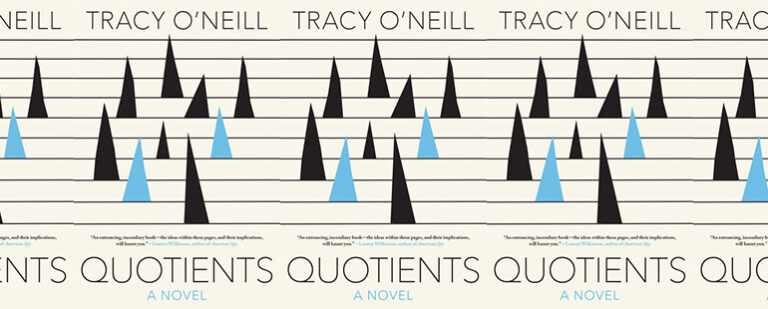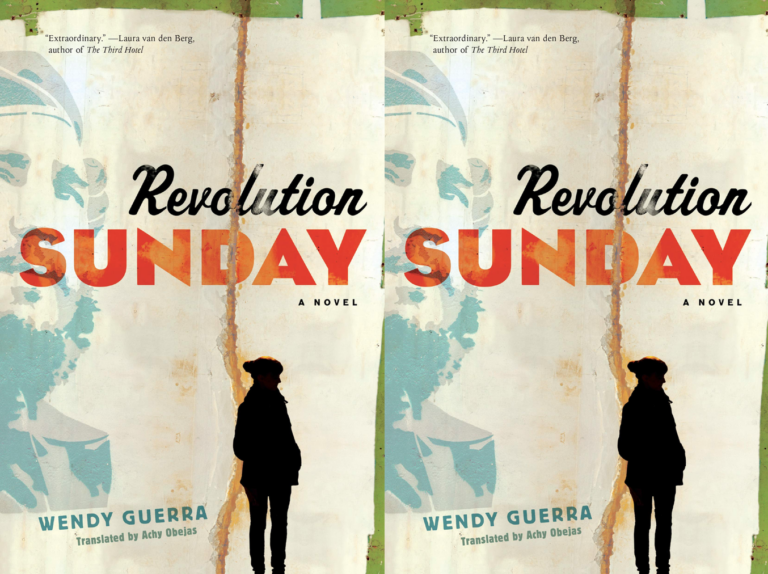The Reflections in Li Zi Shu’s The Age of Goodbyes
The Age of Goodbyes
Li Zi Shu (translated by YZ Chin)
Feminist Press | November 8, 2022
The front cover of Li Zi Shu’s The Age of Goodbyes, translated from the Chinese by YZ Chin, featuring a disembodied mirror slicing through the title, depicts the mirroring effects within the book’s three-storyline structure. The first storyline follows a woman named Du Li An who marries a gangster and becomes a boss lady. The second, written in the second person, addresses someone reading a book called The Age of Goodbyes by a woman whose pen name is Shaozi—and whose real name is Du Li An—while piecing together his family lineage. The third is an extended piece of criticism of Shaozi’s work by a man known as the Fourth Person. The reader of Li’s The Age of Goodbyes thus enters not just one floating mirror but three. As the novel rotates through these three storylines in every chapter, it is soon clear that the objective is to glimpse how the truth of each is reflected, refracted, and twisted in the other two.
It is clear the book is inventive and experimental from the beginning—it starts on “page 513,” with the second-person male narrator describing Shaozi’s fictional The Age of Goodbyes, which also begins on page 513. Du Li An’s story begins a few pages later, on May 13, 1969, the day race riots broke out in Malaysia between the Malays and the Chinese following a national election. The character Du Li An is also reading a novel called The Age of Goodbyes. By starting the book on 513 (i.e., 5/13, or May 13), Li notes that modern Malaysia, and with it the stories of her characters, began on that day.
Du Li An’s story is mostly devoid of the metafictional elements that imbue the other two storylines. Du Li An climbs the social hierarchy through her husband’s position with a local gang, moving from selling food on the street to owning a tea house. As his star descends, hers ascends. She becomes an intimidating boss lady and has an affair with her step-daughter’s boyfriend. The man is a womanizer and happens to be the twin brother of Du Li An’s pre-marriage lover, Yip Lin Sang, a man she gave up once she met her husband. Like the race riots, the details about Du Li An’s relationship with Yip Lin Sang are mysteriously absent, though the reader learns that he was a high school teacher, an intellectual, and involved in the Chinese opposition protests. Attention is drawn to Du Li An’s love for him at the beginning, and as the novel progresses his absence leaves a mysterious gap.
Clues to the gap, however, might be reflected in the second storyline. The “you” the narrator addresses likely has a twin brother. Though the narrator’s mother never mentioned him having a brother before her death, he spots a young man around the city and knows immediately they are related: “He looks practically unchanged, almost like the reflection you see in the mirror daily.” It’s difficult to know how much to trust this second-person narrator, who sometimes confuses fictional elements of Shaozi’s The Age of Goodbyes for his reality, but in this way, he is Shaozi’s perfect reader, blurring the boundary of fact and fiction.
The third storyline holds the final reflection: that Du Li An is the author of The Age of Goodbyes and writes under Shaozi, her pen name. The second person also narrates this storyline—from perhaps the same perspective, writing of the same “you,” as the second one—and references Shaozi’s most devoted literary critic, The Fourth Person, “who went so far as to introduce himself as Shaozi’s ‘tapeworm burrowed deep within her bowels.’” Despite his decades of research, The Fourth Person did not find many links confirming that this Du Li An was in fact Shaozi. The lack of a direct correlation is of course fitting for this novel where connections are never verified. This is not the kind of book that encourages its readers to cuddle up and get comfortable, but one that challenges you with questions of how you know what you know. Is the truth always just a reflection? Li seems to suggest it is.
The labyrinthine structure and doublings of The Age of Goodbyes reminds me of Vladimir Nabokov’s zany Pale Fire (1962), with its story disguised as metafictional commentary. Like Pale Fire, structure, character, and perspective are tossed around in The Age of Goodbyes to become something less static, more lived in, and similar to our constructions of memory. Li wants us to notice the gaps and erasures, the juxtapositions that are real and contrived that we use constantly to construct and deconstruct and reconstruct a national event, like Malaysia’s race riots, and like our personal stories.


